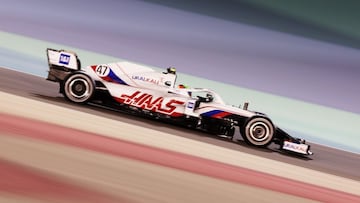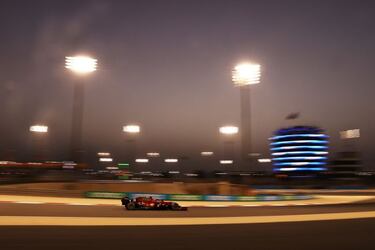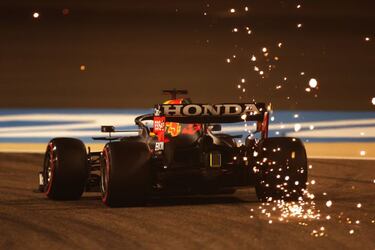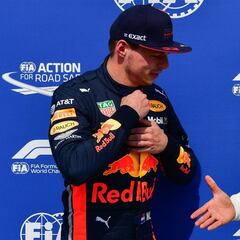What are the changes to F1 for the 2021 season? rules and regulations explained
Mercedes’ Dual Axis Steering system (DAS) is one of a series of areas which have been subjected to changes for the 2021 F1 season. We take a look at the others.

There have been a number of small but significant changes have been introduced for the 2021 F1 season with bigger changes to the regulations, including amendments affecting car design set back until next year. The modifications to the FIA rule book affect financial, technical and sporting regulations.
Cars floor shape
One of the changes approved by the FIA World Motor Sport Council back in May last year involved alterations to the shape of car floors which will need to be clipped to cut downforce, or negative lift, effectively reducing aerodynamic performance on F1 cars by about 10% The FIA state that the whole floor must now be solid, with triangular cutaways at their rear, reducing the downforce-generating surface area on cars further. It is hoped that the move will also make cars safer.
Rear brake duct winglets shortened
Another minor design change implemented to limit downforce by a further 4-5% involves making the rear brake duct winglets 40mm to 80mm narrower. The top winglets meanwhile will remain at 120mm.
To writing the future
— Formula 1 (@F1) March 25, 2021
To creating more history
To chasing dreams...#DreamBig pic.twitter.com/JFF3RdeU3V
Diffuser fences cut by 50mm
The diffuser fences that were previously further inboard will be limited to the step plane will also be modified, they will be reduced in length by 50mm.
Budget cap
Possibly the biggest change is the introduction of a budget cap in 2021, which will mean teams are limited to spending a maximum of $145 million per year (21 races) – although in practice, this will end up being $147.4 million, with teams afforded an extra $1.2m for each additional race. That baseline will be reduced again to $140 million next year and to $135 million in 2023.
Teams that exceed the budget cap could have points docked, a race ban or in severe cases, be disqualified.
Changes to aerodynamic testing
This year, aerodynamic testing regulations (ATR) will be permitted on a performance-related, sliding scale basis. This means that teams which finished lower down the championship table in 2020 will be given more hours for aerodynamic development and windtunnel runs that the team that finished at the top end of the standings. Using last year’s table as an example, Williams, who ended further down, will get more time dedicated to CFD and FEA work than Mercedes who finished further up. In 2020, teams were restricted to 65 runs per week but that has been cut to maximum of 40 runs per week in 2021.

Minimum weights of cars and power units
The minimum weight for F1 cars without fuel will rise from 746kg in 2020 to 752kg in 2021. The minimum weight of the power unit has gone up 5kg from 145kg to 150kg.
Anti-copy cat regulations
In November last year, the FIA moved to clamp down on ‘copycat cars’. Racing Point was found guilty of illegally designing parts of its RP20 based on design specs for Mercedes' W10 model (front wing, endplate, nose and S-duct) before these were regulated as listed parts in 2020. All information used to create car parts must be available to all competitors, and only obtained through the use of standard photography, observation, videos and so on, rather than teams being able to strike deals to have access to another competitor’s LTCs.
Automatic tyre allocations
For each race, every driver will receive two hard sets, three medium sets, and eight soft sets at each race although the compound selection varies from track to track. Pirelli and the FIA will reserve the right to alter the selection up to 15 days before each race. Softer rubber tyres (C2, C3 and C4) will be taken to Baku and Brazil.
DAS banned
Mercedes will not be able to employ their Dual Axis Steering system (DAS) which allows drivers to move their front tyres by pushing or pulling their steering wheel. This has been banned by the FIA, who explain under Article 10.5.2 of the official 2021 F1 regulations: "The re-alignment of the steered wheels, as defined by the position of the inboard attachment of the relevant suspensions members that remain a fixed distance from each other, must be uniquely defined by a monotonic function of the rotational position of a single steering wheel."

Practice sessions now 60 minutes
The first two practice sessions of the weekend, Free Practice 1 and Free Practice 2 were both set at 90 minutes with Saturday’s Free Practice 3 lasting 60 minutes. That has been changed - FP1, FP2 and FP3 will be 60 minutes in duration. Maximum race time, including any suspensions, is also cut from four hours to three.
Exhaust systems limited to eight per season
Related stories
Article 23.3 of the 2021 F1 regulations states: “Unless he drives for more than one team (see 23.3(c) below), and subject to the additions described below, each driver may use no more than 3 engines (ICE), 3 motor generator units-heat (MGU-H), 3 turbochargers (TC), 2 energy stores (ES), 2 control electronics (CE), 3 motor generator units-kinetic (MGU-K) and 8 sets of Engine exhaust systems during a Championship season”. Five or ten grid place penalties will apply if those numbers are exceeded.
🚥 - All Set & Ready for 2021@F1 pic.twitter.com/IUWsegRxql
— FIA (@fia) March 10, 2021
Natural, sustainable materials permitted
Finally, new, sustainable, natural materials such as flax, hemp, linen, cotton and bamboo can now be used as an alternative to materials such as carbon fibre. McLaren in conjunction with Bcomp recently developed a seat made of flax fibres which was as rigid and strong as one made of carbon fibre but with a 75% lower C02 footprint to produce.

